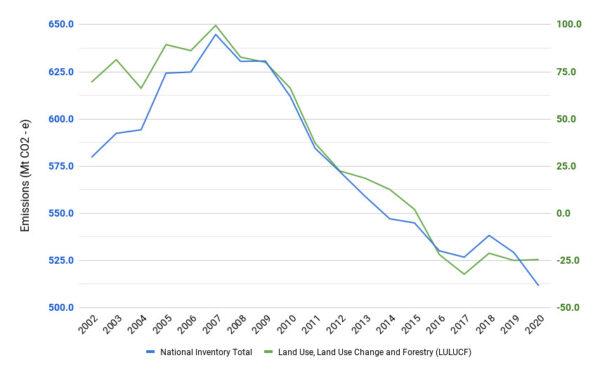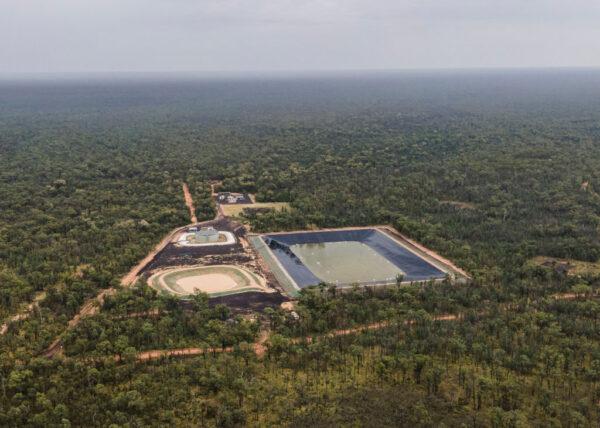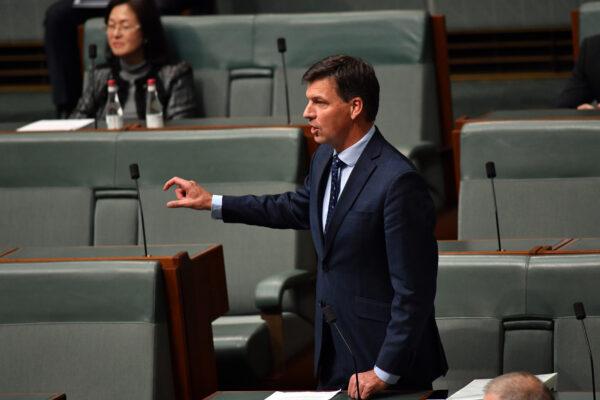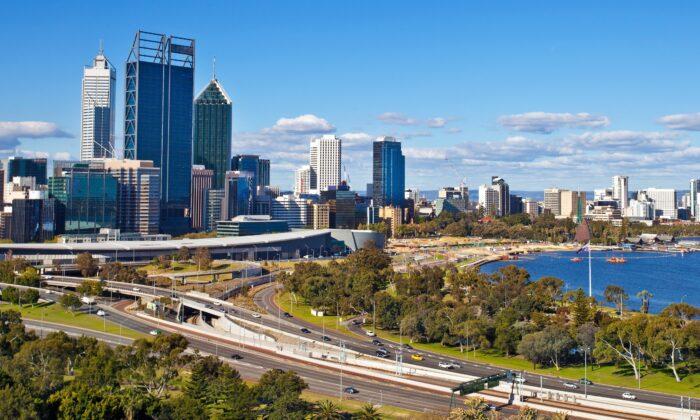Australia’s carbon emission estimates have fallen to their lowest point in the last 30 years, driven primarily by offsets from the nation’s vast lands and forests.
Recently released data has shown that land containing forests and other vegetation—which absorb and store carbon dioxide—have played a critical role in directing Australia’s drop in emissions.
Unlike other sectors, management of land—also known as “land use, land-use change, and forestry” (LULUCF)—can allow for the removal of carbon dioxide from the atmosphere and act as a carbon “sink.”
Since peaking at 638 Mt (megatonnes, or million tonnes) in 2007, Australia’s overall emissions fell by 21.7 percent to a new low of 499 Mt in 2020. Of this decline, 83 percent came directly from LULUCF.

In particular, the report outlined that significant contributions to lowered emissions came from reductions in land clearing operations and native forest harvesting.
It also attributed improvements in “soil carbon” by encouraging farmers to employ strategies that help maximise carbon absorption and retention within agricultural soil.
It has also recently pledged $36.7 million towards further research in the form of the National Soil Carbon Innovation Challenge.
Other minor sources of emissions reduction include energy following a transition from coal to gas, wind, and solar and most recently plummeting transport demand following COVID-19.

This all means that current carbon emission data now place Australia as producing 499 Mt of emission in 2020, which is a reduction of 19.9 percent below 2005 levels. If this trend continues, the forecasts predict Australia will meet or even surpass the requirements of the Kyoto Protocol—to reduce emissions by 5 percent below 2000 levels by 2020—and the Paris Agreement—to reduce emissions by 26 to 28 percent below 2005 levels by 2030.
“Australia’s progress is nowhere near what’s needed. Recent analysis shows that excluding land-use change emissions (which the Federal government has virtually no control over), our emissions are 7 percent higher than 2005 levels,” the Climate Council said.
“Every quarter, the Federal Government tries to take credit for emissions reductions it has made zero contribution to. Instead, it is holding back progress on the scale and pace of emissions reductions we need,” Climate Council researcher Tim Baxter said.
“Meanwhile, the Federal Government has not introduced a single climate policy that has demonstrably reduced emissions: be it developing renewable energy technology to support a transition away from fossil fuel; or incentivising electric vehicle purchases.”
“The Government has a comprehensive suite of policies to meet its emissions reduction commitments, encourage innovation and back new and emerging low emissions technologies,” Taylor said.

“The Government has announced, as part of the 2021-22 Budget, a further $1.6 billion to bolster Australia’s position as a leader in low emissions technologies and to meet Australia’s emissions reduction targets, taking our total expected investment to more than $20 billion over the decade to 2030.
Angus Taylor had previously said that the push against gas did not support a reduction in greenhouse gas emissions and only served to disadvantage Australian families and businesses.
“The ironic thing about gas is that a lot of the anti-gas activists say, ‘well, it’s important to get rid of gas because of the emissions,’” he said. “Frankly, more gas in our system right now will bring down emissions.”
“What we’ve got is these activists who are acting against the interests of Australia, against the interests of Australian manufacturing, against the interests of Australian small businesses and households,” Taylor said.






Friends Read Free